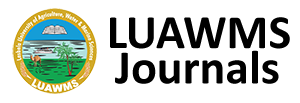A Corpus Analysis of Modality in Covid-19 Based Editorials of Pakistani English Newspapers
Keywords:
COVID-19, Corpus, Modal verbs, Editorials, Pakistani English newspapersAbstract
"Modality" is one of the "golden oldies" among the fundamental concepts in language semantics. It is a well-known grammatical idea that is put into practice. To begin, the research examines the various sorts of modalities employed by writers of editorials based on COVID-19 in Pakistani English newspapers. The second part of the study investigates the editors' modality functions. Finally, the impact of the COVID-19 issue on the modality/language employed by editorial writers in Pakistani English newspapers is investigated. To continue, the information was gathered from two Pakistani newspapers, "The Express Tribune" and "Daily Times." It contains 87 COVID-19-based editorials from January to May 2020 (37 from "The Express Tribune" and 50 from "Daily Times"). The AntConc 3.4.4 version was used for analysis, and the functional approach was used to analyze modality (Halliday, 2004). The findings found that the editors of the "Daily Times" utilized a high degree of modals (must, should) to strictly instruct the public about COVID-19 precautions/safety measures. The COVID-19 issue is discovered to vary in terms of its utilization in the language, which is the key concern of the current study. In comparison, both the "Daily News" and "The Tribune Express" newspapers successfully maintained the balance by employing median models (will, would). As a result, the editors of "The Tribune Express" newspaper played a constructive role in disseminating information to readers by employing polite/low-degree modal verbs (could, may, might).



